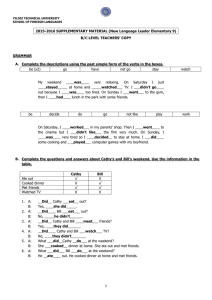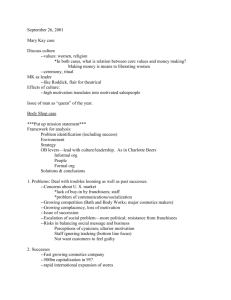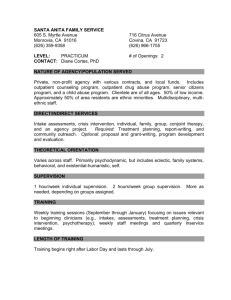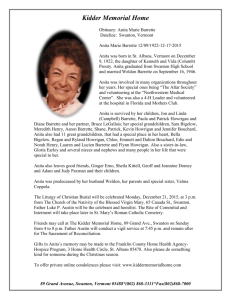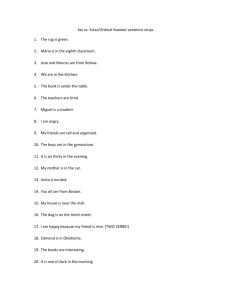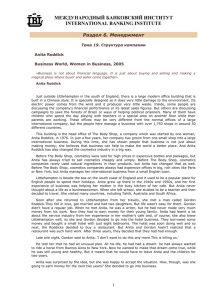1 Introduction
advertisement
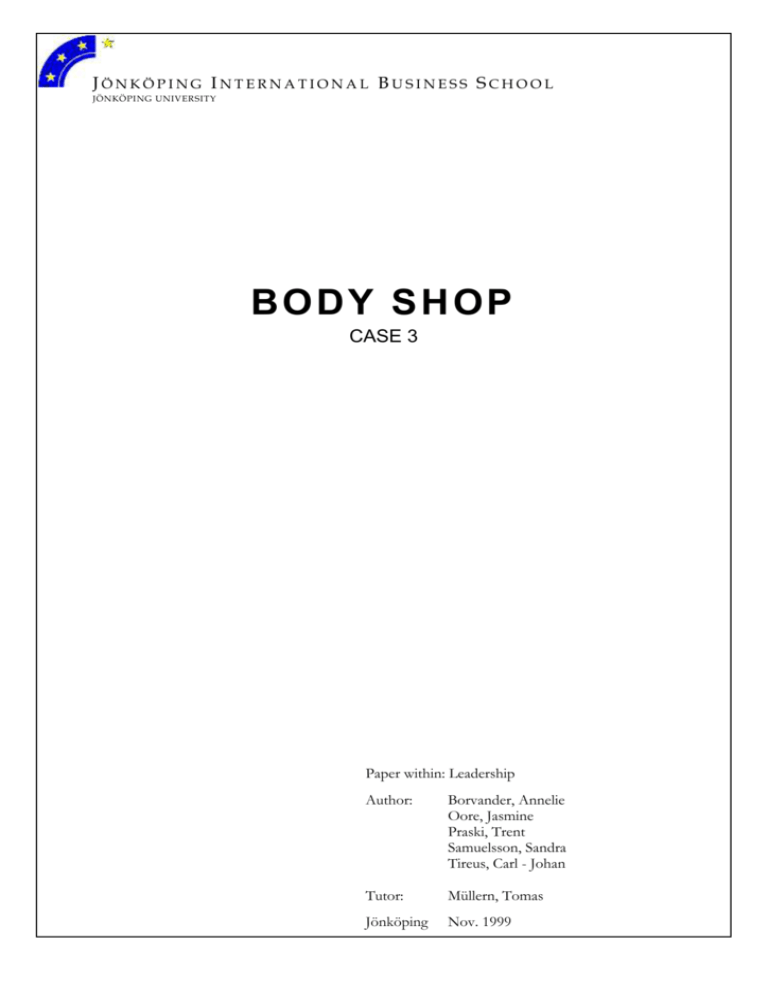
JÖNKÖPING INTERNATIONAL BUSINESS SCHOOL JÖNKÖPING UNIVERSITY B OD Y SH OP CASE 3 Paper within: Leadership Author: Borvander, Annelie Oore, Jasmine Praski, Trent Samuelsson, Sandra Tireus, Carl - Johan Tutor: Müllern, Tomas Jönköping Nov. 1999 Table of Contents 1 Introduction ................................................................................ 1 2 Analysis ...................................................................................... 1 2.1 2.2 2.3 2.4 Trait Approach ...........................................................................................1 Style Approach ..........................................................................................1 Path-Goal Theory ......................................................................................2 Transformational Leadership .....................................................................2 3 Conclusion ................................................................................. 3 i 1 Introduction The Body Shop was founded in 1976 in Brighton England by Anita Roddick. Initially, her goal was to earn enough money to support her family. Today, the company is in 45 different countries and had earned £ 219.7 million in 1995. The Body Shop is in the cosmetics industry and seeks to integrate two core concepts; one that produces personal care products for a profit, and the other that creates a vehicle for social activism and environmental concerns. The Body Shop’s business idea is “to dedicate our business to the pursuit of social and environmental change.” In this case we will evaluate the leadership styles of Anita and Gordon Roddick according to the Leadership approaches described by Northouse (1997). 2 Analysis After reading the Body Shop case presented in class, several leadership approaches in Northouse could be related to Anita and Gordon Roddick’s leaderhip behaviours. However, we have decided to focus on the four major approaches that we have found most relevent for this case. These are the Trait Approach, the Style Approach, Path-Goal Theory, and Transformational Leadership. 2.1 Trait Approach The Trait Approach suggests that certain people are born with special characteristics that make them great leaders. Northouse describes the major leadership characteristics to be intelligence, self-confidence, sociability, determination, and integrity. Since the business is values based, and is lead by a woman, certain female traits, as presented by Northouse, are evident within the case. First, Anita demonstrated a sense of integrity throughout the case as she continually mentioned the importance of honesty and trustworthiness. For example, one of the Body Shop products was removed from the shelf after it was found out to be tested on animals. This is in correlation with her policy on humanity and animal testing. Secondly, she also shows determination by strictly following her goals and values throughout the life of the business. This was noted in the Board of Director’s Public Declaration that mentioned the top 32 points that employees were dissatisfied with. Anita was determined to solve these issues. Also, it is shown throughout the case that Anita displays self-confidence as she strongly believes in her values and ideas. 2.2 Style Approach The Style Approach emphasises two types of behaviours; task-oriented and relationshiporiented. In the case, both types are found. Anita is a typical relationship-oriented leader whereas Gordon is primarily task-oriented. This is reflected in the case where it mentions the imbalance between their respective views where Anita emphasises quality rather than quantity but Gordon is more financially driven. Essentially, Anita strived for a more family oriented environment by developing sound relationships and providing top quality products. 1 A connection can be drawn here with the Women and Leadership chapter in Northouse in several respects. Typical female characteristics as shown by Anita include a belief in the right to work for self-fulfilment as well as for money, ability to share feelings, and the ability to listen. In terms of Gordon, Northouse suggests that a typical masculine strength is to focus on the task and regard it as at least as important as the relationship. Furthermore, it must be noted that these two styles are used interchangeably between the two leaders. 2.3 Path-Goal Theory The Path-Goal Theory deals with enhancing employee performance and employee satisfaction by focusing on employee motivation. This theory is applicable to the Body Shop case in that management has defined goals, but has struggled to clarify paths and remove obstacles for employees in order for them to reach those goals. Initially, the Path-Goal Theory fit well with the Body Shop environment because the company was small and it was easier to find employees with the same visions. As the company grew, however, it became more difficult to find individuals with the same visions and thus the path to the goal had more obstacles to overcome. In addition, it became more difficult to influence the goals upon a more diverse group of subordinates. Accordingly, Peter Tyson identified this as the company’s key weakness. It must be noted, however, that the theory still fits since the case shows clear ambitions to motivate the employees, definitions of goals and clarifications of paths. This is shown through the removal of obstacles via the establishment of the Values and Visions Centre which helps bring focus to the corporate vision. 2.4 Transformational Leadership Northouse describes Transformational Leadership as the process of how certain leaders are able to inspire followers to accomplish great things. This is often done by creating a vision and focusing on needs and values. The Body Shop indeed has a strong vision which is to dedicate their business to the pursuit of social and environmental change. This is done by various campaigns and investments in favour of environmental protection, animal protection, fair trade, and human rights. An essential part of transformational leadership is having a charismatic leader, one who is a strong role model and makes others want to follow their vision. In essence, these characteristics are portrayed by Anita. Anita’s vision is the company’s vision, which makes her a strong role model. It can be seen that as the company has grown, so too has the awareness that Anita intends to portray. Moreover, she established a policy where employees get paid time off for volunteer work in the area of social well being, thus enhancing her vision via the employees. This can be related to Inspirational Motivation which is also a factor in Transformational Leadership. Anita also shows Individualised Consideration for the employees. One example of this is through the ”Red Envelope Process” which is a feedback tool used to help employees voice their concerns as well as subvert hierarchy. 2 3 Conclusion We believe that Transformational Leadership is the most applicable approach for this case. This is because the Body Shop’s leadership is based on Anita’s charasmatic nature and her vision. However, after reading this case, we see the problems with Transformational Leadership approach. These include the problem of transferring your vision in a larger organization and focusing too much on the vision instead of the products and employees. This was noted in the statement ”What the Body Shop Cares About” where neither the products nor the employees were mentioned. The issues mentioned above will be a major problem once Anita steps down. We believe that it will be difficult for the company to sustain the vision, and that it is essential to find a suitable replacement. 3

